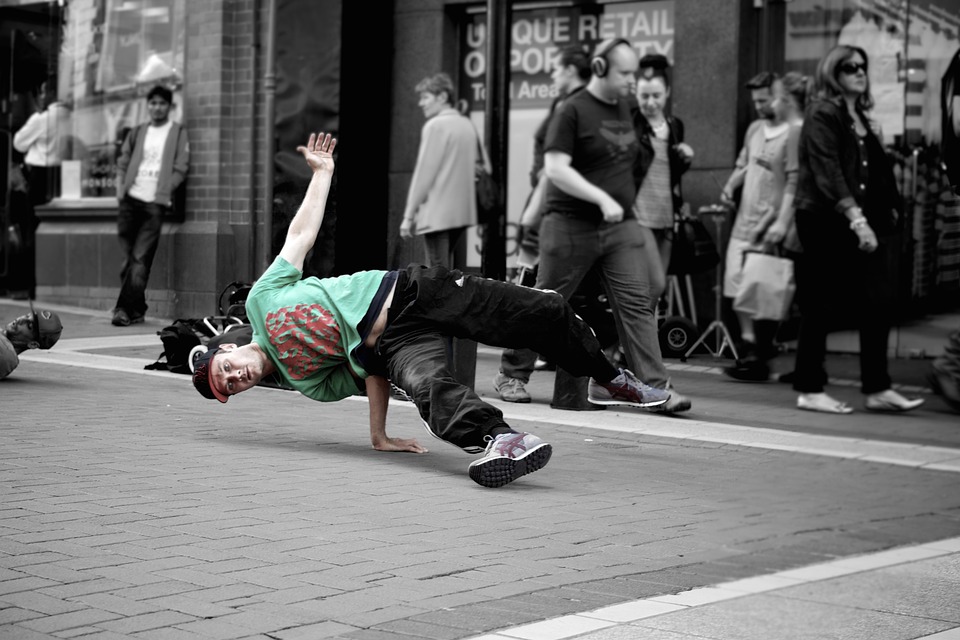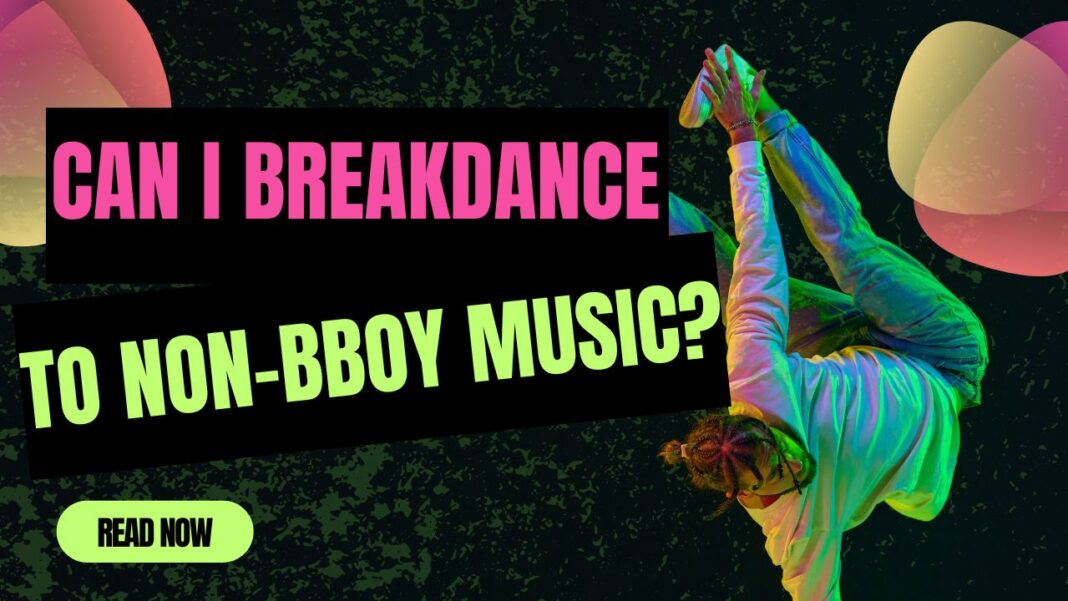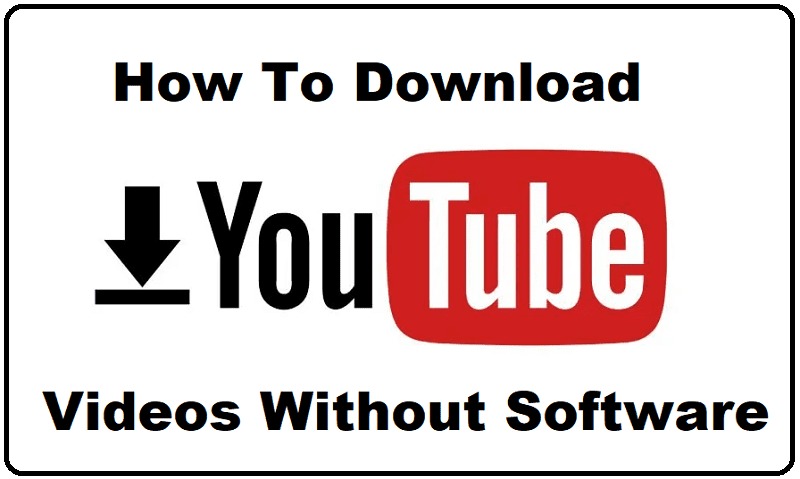Maybe you wonder if breakdancing is only used in classic hip-hop tracks and breakbeats. And that is true; however, it is not a genre strictly confined to the generation of breakdancing, because this doesn’t mean one can’t try out with different genres. Many of the breakers experiment using music in different styles of jazz, tracks of K-pop singers, making their performance unique.
But is this possible: to breakdance by non-bboy music? Of course! Let’s try to figure out why a dancer sometimes leaves the world of hip-hop and what you can do with your moves in order to enter any beat without losing the spirit of breaking.
What is B-Boy/B-Girl Music?
B-boy and B-girl music originated from breakdancing, which appeared in the 1970s along with hip-hop culture. Steady beat, with a highly energetic form like funk or breakbeats, enable breakers to execute beautiful footwork intricacies or power moves accompanied by impressive freezes. Because these songs have perfect beats and appropriate tempos and are mainly explosive and very rhythmic, they ideally fit well with the movement of breakers.
Always with rhythmic sound complemented with layered sound rhythms, hip-hop has been their most primary source of moving rhythms. This background will be understood in the experiment for non-bboy music keeping the original essence of breaking alive.
Exploring Non-Bboy Music Genres
So, what about dancing to music outside the traditional bgirlbboy sphere? Each genre offers something unique. Let’s dive into a few:
- Rock: The strong beat in rock music works well for breakers looking to amplify their moves with high-energy guitar riffs.
- Pop: With its catchy rhythms, pop can be surprisingly good for breaking. Even K-pop singers have dance tracks with intense beats perfect for footwork.
- EDM: Electronic beats and heavy drops create dramatic moments for power moves and freezes.
- Jazz: For more fluid, intricate routines, jazz’s irregular beats can inspire creative footwork.
- Classical: It might seem unlikely, but classical music’s crescendos and tempos can add drama to certain breaking styles.
Each genre adds a different vibe, allowing dancers to diversify their performance.
Benefits of Breakdancing to Non-Bboy Music

Breakdancing to non-bboy music has some exciting benefits. First, it pushes you to be more creative. Trying out different genres encourages you to step out of your comfort zone, opening up new ways to interpret music. Additionally, dancing to a variety of beats helps improve your rhythm and adaptability.
Non-traditional music also gives you an edge in competitions, helping you stand out with unexpected song choices that leave a memorable impression. Plus, it’s just fun! Mixing things up keeps your practice sessions fresh and allows you to develop a style that’s uniquely yours, embracing both tradition and innovation.
Challenges of Dancing to Non-Bboy Music
While breaking to non-bboy music is rewarding, it’s not without challenges. Different genres may lack the consistent beat breakers rely on in hip-hop, making it difficult to sync power moves and footwork. For instance, jazz or classical tracks often have unexpected tempo changes or softer beats, which can be tricky for timing.
Adjusting your movement style to match new rhythms may feel unnatural at first, especially if you’re used to hip-hop’s structure. But overcoming these challenges can make you a more versatile dancer, capable of adapting to any beat. Think of it as an opportunity to strengthen your musicality and coordination.
Tips for Breakdancing to Non-Bboy Music
Here are some tips to help you get started with non-bboy music. First, choose tracks with clear, steady beats. This will make it easier to sync your moves. Practicing to songs with similar tempos as traditional breakdance tracks is helpful. Don’t be afraid to experiment with different moves; some non-bboy genres work better with fluidity and style rather than just power. For genres with fluctuating rhythms, like jazz, break down the track and identify key beats where you can hit a freeze or transition. Ultimately, find music that resonates with you, so your dancing feels authentic and fun.
Popular Breakers Who Use Non-Bboy Music
Several notable B-boys, B-girls, and crews regularly incorporate non-bboy music into their routines, making a mark in the breaking world. One example is B-boy Neguin, known for his explosive moves and creative use of rock and Latin music. Other breakers blend genres, integrating everything from funk-rock to electronic beats, adding their own twist to the traditional hip-hop base.
These dancers inspire others to explore new sounds, showing that breaking isn’t restricted to hip-hop. Their innovative routines keep breaking fresh and encourage the community to embrace musical diversity.
Community Opinions on Non-Bboy Music
The breaking community has mixed opinions on dancing to non-bboy music. Some traditionalists feel that hip-hop music is inseparable from breaking and prefer sticking to its roots. However, many see value in blending genres, arguing that it allows breaking to evolve with time. Some breakers feel that adding various music styles respects breaking’s spirit of creativity, while others worry it might dilute the art form. Despite these debates, the consensus is shifting toward accepting diverse music styles, reflecting the individuality and experimentation central to the breaking culture.
Conclusion
So, can you breakdance to non-bboy music? Absolutely. Breaking to different genres can be both a fun challenge and a way to develop a unique style. From rock and EDM to even K-pop and classical, experimenting with various music forms helps you grow as a dancer and refine your sense of rhythm. It’s about finding balance – embracing the roots of breaking while creating something fresh. Whether you’re a beginner or a seasoned breaker, don’t be afraid to explore and make breaking your own. After all, breakdancing is about freedom, creativity, and making your mark, no matter the music.




